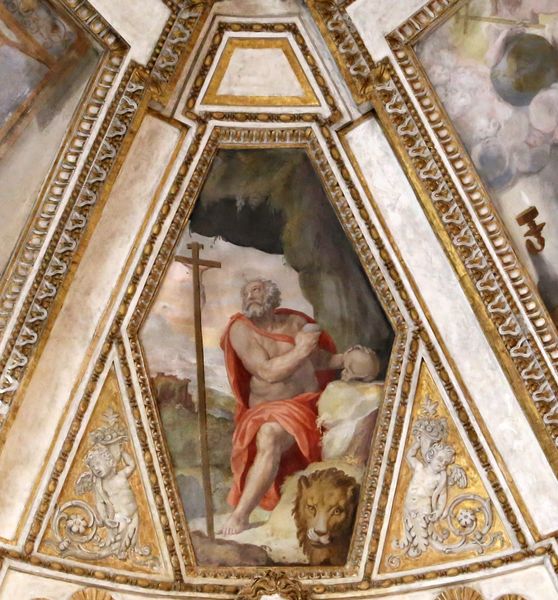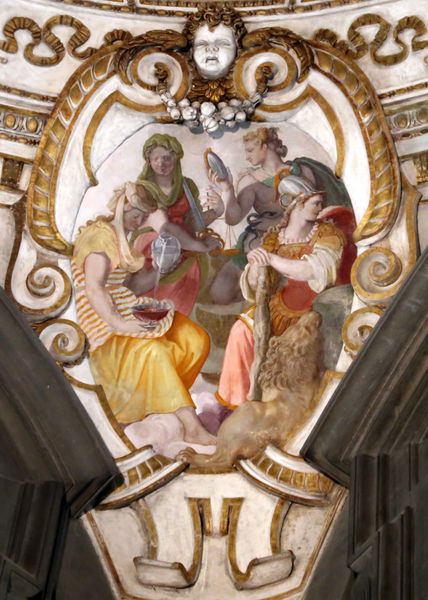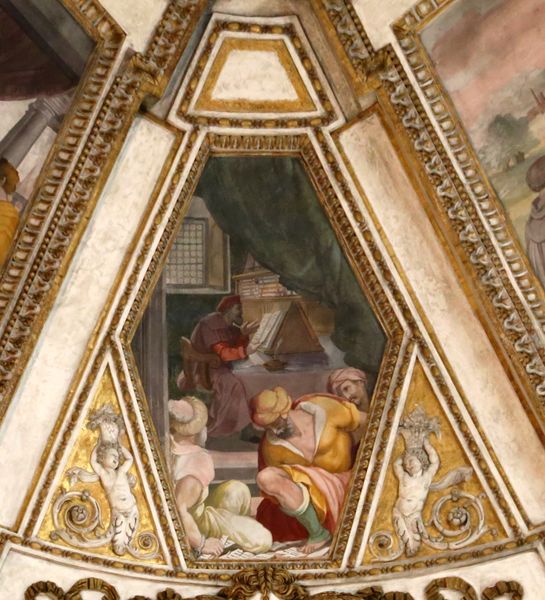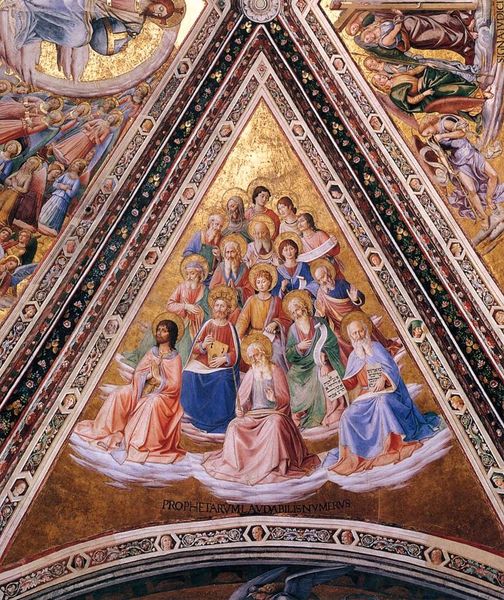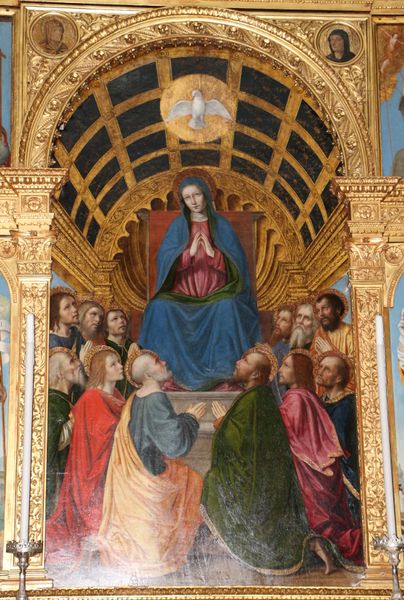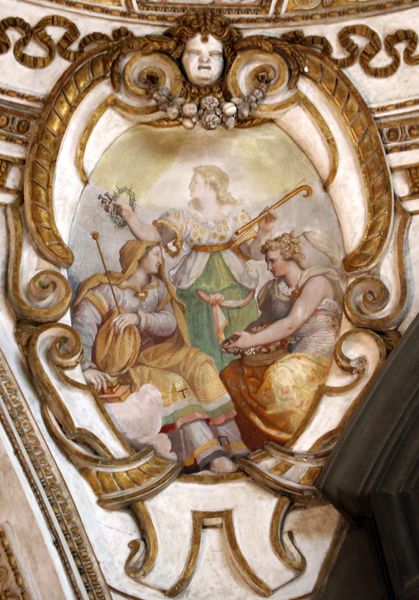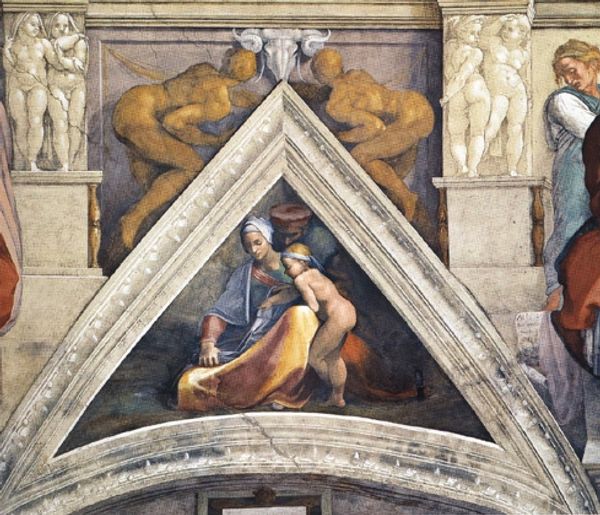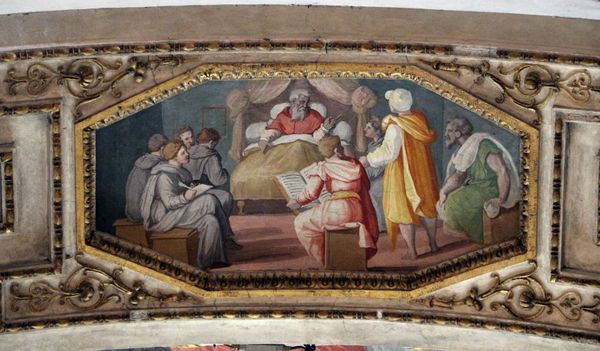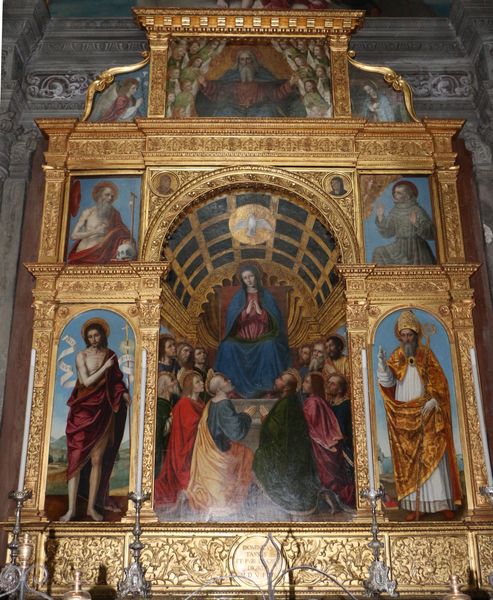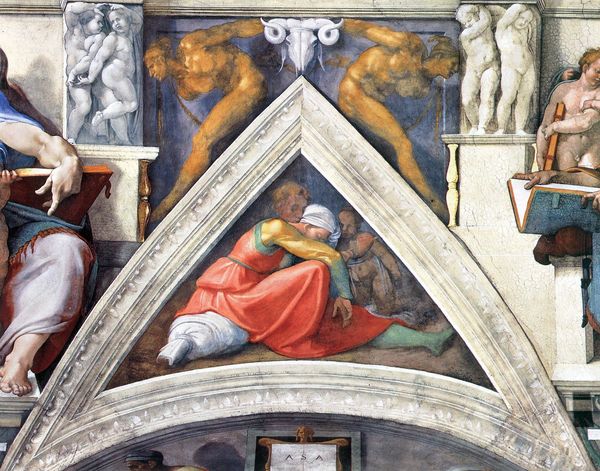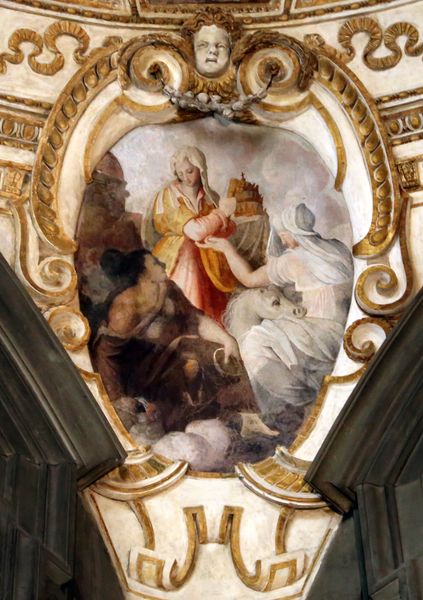
painting, fresco
#
narrative-art
#
painting
#
mannerism
#
figuration
#
fresco
#
11_renaissance
#
history-painting
#
academic-art
Copyright: Public domain
Curator: Hello, welcome to our tour of Alessandro Allori’s “Stories of St. Jerome,” painted in 1577. Editor: This fresco is located in Santa Maria Novella, in Florence. It’s, well, very high up! All these serious-looking men surrounding a child and…are they at an altar? What am I looking at here? Curator: Let's unpack that. How does the concept of sacred space intersect with prevailing societal norms of family, patriarchy, and access? What do you see represented, and *not* represented, in this particular imagining? Editor: I see mainly older men, and what appears to be a baby in their arms, at a large stone table or altar. It seems… exclusionary. Is that the intent, do you think? I mean, were these paintings deliberately designed to make people feel unwelcome? Curator: That’s an insightful observation. Remember that 16th-century Florence existed within strict social hierarchies. Who had access to knowledge, power, and religious experience? Allori's piece reinforces a patriarchal structure where wisdom, faith, and authority were largely confined to male figures. Editor: I see. And how does St. Jerome fit into that framework? Was he a figure of power? Curator: Precisely. Saint Jerome himself translated the Bible into Latin; he was very well learned and therefore, influential. The fresco elevates male lineage through faith. Where do women stand within the composition’s implicit messaging? Where do *you* stand, positioned below the fresco? Editor: The placement, looking *up* at it, really emphasizes the power dynamic, doesn't it? Especially considering women, or anyone questioning authority, would have been marginalized. The history behind this piece adds a whole layer of meaning. I'll definitely think about this differently now. Curator: Indeed. Allori's work provides us an opening to contemplate who gets to tell these stories. Consider, then, our responsibilities in reframing such historically charged art in the context of our present-day, ever-evolving realities.
Comments
No comments
Be the first to comment and join the conversation on the ultimate creative platform.

